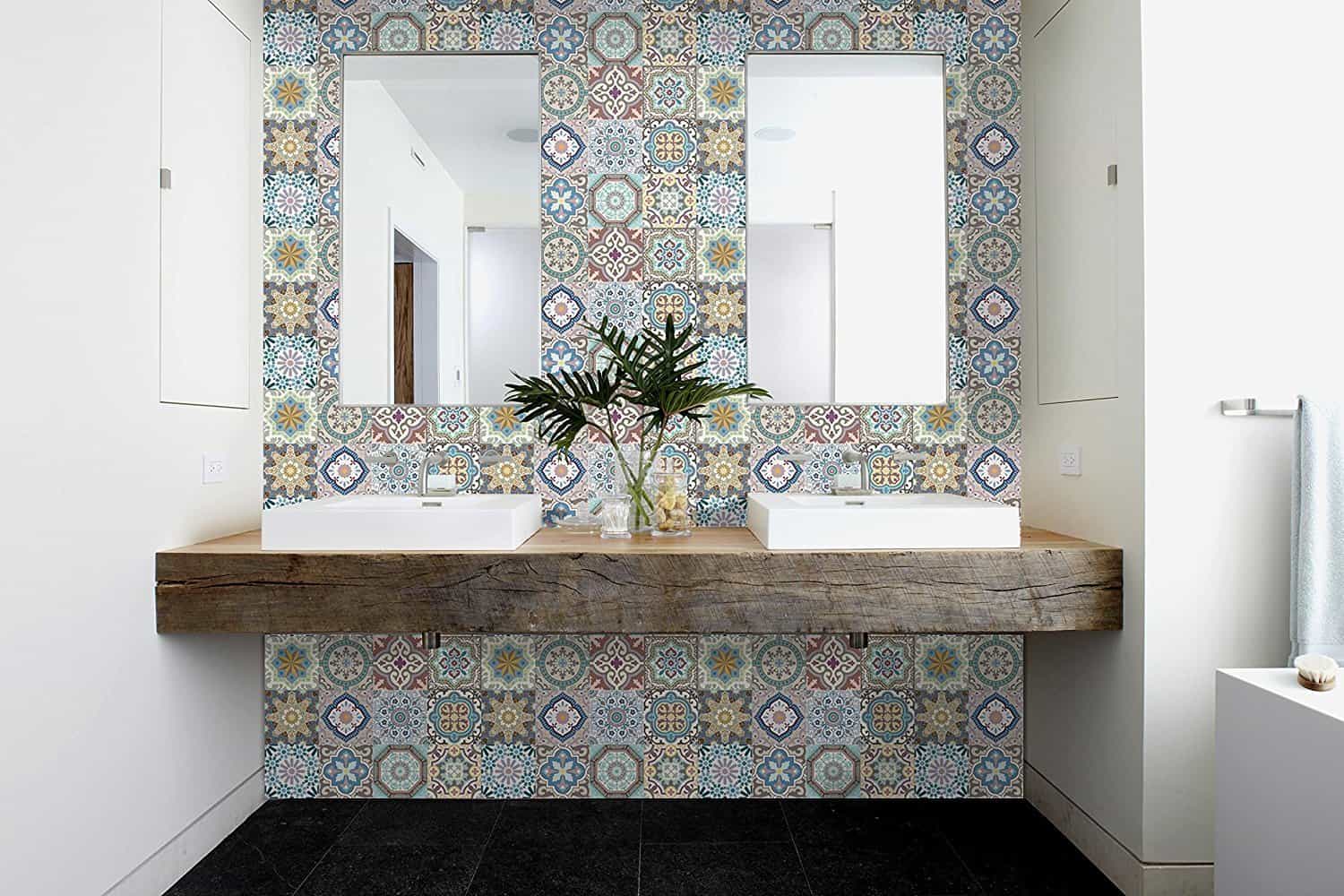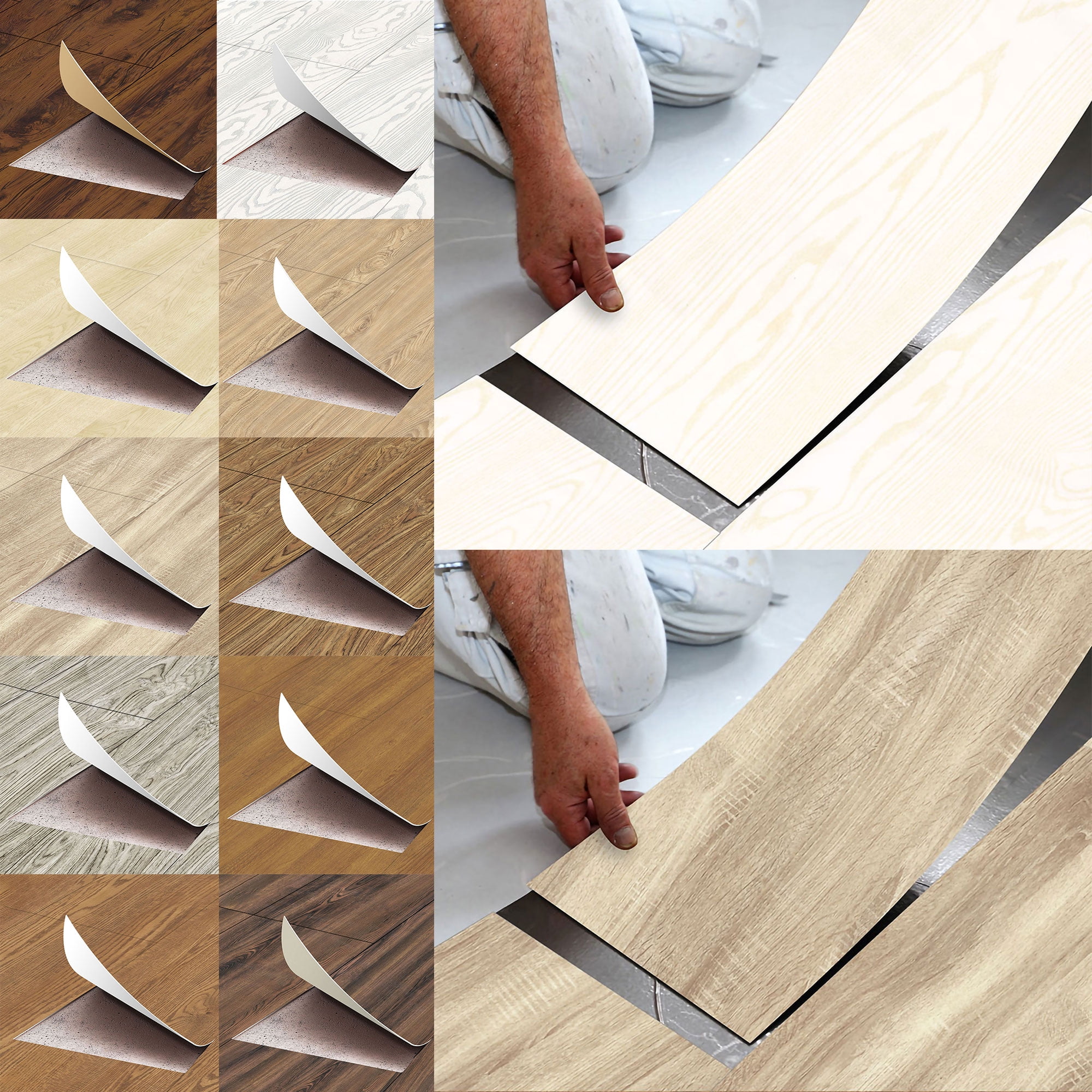
Ensure the male end is pointing towards the female end of the first row. Click all the plank ends of the second row together in the same way, keeping this row close to the first row.
#Bathroom with vinyl plank flooring wall full
Start the second row with a full board which will ensure that the joints are staggered. Continue until the entire row is installed and ensure the joints are flush. Start at a 45deg angle and gently push flat. With the female click in place on the ground, insert the male click system. The female parts of the click system should be facing away from the wall. Use a set square to ensure a straight cut. Cut a board by scoring with a Stanley knife on the surface and then snapping it off.
#Bathroom with vinyl plank flooring wall install
Install the entire length of the first row, before connecting the next row. Refer to the manufacturer's instructions for which click type you have as this will affect the order that the boards are installed in. Some boards will use a fold click along the shortest edge of the board and an angle click along the longest.


There are different click systems with click vinyl tiles, but the 2 most common are "tap down" click (sometimes called a "fold down") and a more traditional "angle click". Threshold bars, beading, and skirting boards will hide most click vinyl expansion gaps. This 7-10mmLVT expansion gap should be maintained throughout the whole installation ensuring that the edges of the floor do not touch anything, including radiators, door frames etc. Threshold strips should also be used at all door openings enabling expansion gaps to be used. This often means breaking up rooms using threshold strips, which are used to hide expansion gaps. Do not lay the flooring in any single direction for more than 7m. Lay the LVT flooringdirectly on top of the underlay starting against a straight wall using 7-10mm spacers to maintain an even gap between the LVT board and the wall. LVT Installation Which Direction to Lay LVT If the moisture barrier has an overlap this should run underneath the next row of underlay. The moisture barrier (if included) should be on the underside. Roll out the underlay at a right angle to the direction the floor is being installed. It is also possible to use self-adhesive vinyl tile underlay, which is excellent for all LVT flooring due to its strong construction and anti-slip nature, often making installations easier and stronger. Most LVT underlayis a high-density 1mm-1.5mm thick foam with a moisture barrier. Other types of flooring underlay can often not provide the correct support for the click joints of a luxury vinyl tile. It is important to only use an LVT underlay. LVT flooring can be laid onto underfloor floor heating, provided the temperature does not exceed 29degC. This will reduce excessive movement after installation which can cause problems after. Ensure that the heating conditions are normal for the room so that the boards will be able to react to the living environment before they are installed. The temperature should be maintained between 18-28Deg to avoid excessive bowing. To do this, leave the closed boxes of flooring in the room of installation for 48hrs prior to laying.

If you are laying onto a new concrete sub-floor, check that it is fully dried which can take 2-4 months Acclimatise Your LVTĬrucial to any LVT flooring install is acclimatisation. Anything over 2mm in a 1 metre run should be leveled out using a suitable floor leveling compound. Place it in multiple areas of the room and get down low to look for any potential dips or humps.

This could be nails, lumps of concrete or generally anything that would obstruct the LVT from being laid perfectly flat. Also, test for dips or humps in the sub-floor using a long straight edge such as a spirit level. Take time to look for any unevenness in the surface. Remove all furniture from the room and then brush and vacuum the sub-floor.įor LVT a key factor in site preparation is checking the level of the sub-floor. One of the most important stages of any click vinyl flooring installation is site prep.


 0 kommentar(er)
0 kommentar(er)
